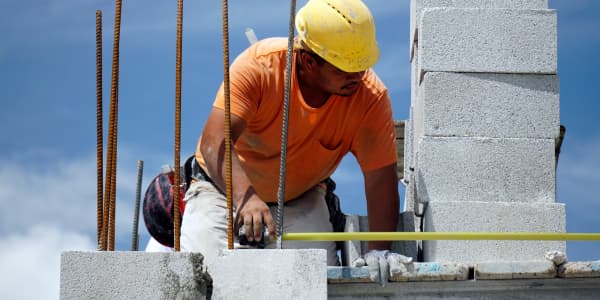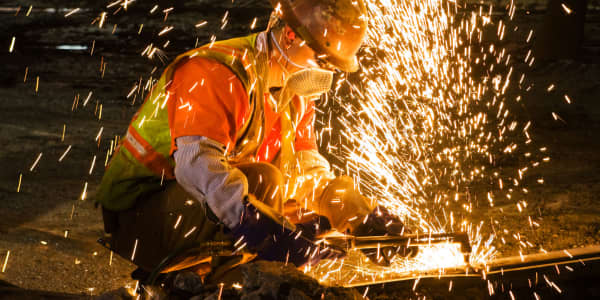Looking for jobs in all the right places
Today's college graduates face a much tougher job market than those of the past. As competition rises, new graduates are increasingly being forced to become mobile, moving homes and jobs just to keep earning a living.
Regardless of this new paradigm for college grads, the prospect of finding stable employment with growth opportunities is still mighty alluring. But be forewarned: Opportunities vary widely, depending on the metropolitan area. Online finance portal WalletHub recently came out with a comprehensive list ranking the best cities for college graduates to start a career, based on a multitude of on- and off-the-clock factors, ranging from starting salaries to the awkwardly named "mating opportunities."
Of the 150 largest U.S. cities WalletHub ranked, here are the five best—and five worst—places for a college graduate to move to in search of a healthy career.
By Roy Luo, special to CNBC.com
Reposted 1 April 2015
1. Washington, D.C.
It should come as no surprise that the nation's capital ranks No. 1 on the list. While New York may be the dream city to make it big in, Washington hits all the right buttons for a college graduate, with a one-two punch: It boasts both the highest citywide percentage of the adult population that has never been married and the second-highest monthly starting salary of all cities surveyed. Additional data from online real estate portal Trulia shows that the Washington metro area also boasts one of the highest female-to-male ratios in the U.S. So whether you're into dating women or dating your job, D.C. is the place to be.
2. Denver, Colorado
Denver is one of the highest cities in the U.S.—elevation-wise, that is (what were you thinking?). Aside from the obvious recreational freedom, Denver isn't just a place to be, it's the only place to be, at least around the Rockies. As the largest city inside a 500-mile radius, Denver's location makes it a no-brainer of a gathering place for companies operating and distributing in the "Mountain West" region of the U.S.
3. Irving, Texas
The former home of the Cowboys football team, Irving has evolved from small Dallas suburb to major Texan economic powerhouse. Irving hosts a range of foreign and domestic corporate headquarters, ranging from BlackBerry to Chuck E. Cheese. However, the city is just one component of the overall attractive Dallas–Fort Worth Metroplex: Dallas ranks eighth on WalletHub's list, while nearby Arlington, Plano and Fort Worth come in at 25th, 26th and 27th place, respectively. Irving is definitely a draw for those who value lots of options.
4. Seattle, Washington
Aside from its role as the birthplace of Starbucks, Seattle is headquarters to three other Fortune 500 companies: Amazon, Nordstrom and Expeditors International of Washington. And other corporate giants, such as Boeing, Microsoft and Costco, have large operations in the surrounding area. But aside from its business-friendliness, Seattle is also widely cited as one of the greenest cities in the U.S., ranking first in the nation for its green building policies and for operating the first city utility to reach zero net carbon emissions.
5. Minneapolis, Minnesota
Though the Minneapolis climate may be overwhelmingly cold, its economic activity is red hot. Sister city St. Paul, just across the Mississippi River, ranks No. 12 on WalletHub's list, and for good reason: The Twin Cities region boasts 18 Fortune 500 company headquarters. In addition to hosting the second-highest levels of economic activity in the Midwest (behind Chicago), the Minneapolis–St.Paul area is a centralized hub for medical research and development, buoyed by the Mayo Clinic and University of Minnesota.
146. Akron, Ohio
The historical Rubber Capital of the World was once home to the headquarters of Goodrich, Goodyear, Firestone and General Tire. Only Goodyear remains as the last bastion of an era when Akron reigned supreme as the fastest-growing city in the U.S. But Akron is still seeing growth in two other industries: world-famous advanced polymer research, supported by the University of Akron's numerous research centers, and illegal methamphetamine labs. Akron is located in Summit County, colloquially known as The Meth Capital of Ohio for boasting almost 400 known meth labs.
147. San Bernardino, California
Before Detroit filed for Chapter 9, San Bernardino held the title as the second-largest city (after Stockton, California) in the country to seek bankruptcy protection. San Bernardino also ranks as the second-poorest city in the U.S., losing only to, again, Detroit. Over one-third of San Bernardino's population lives on some form of welfare, making it no surprise that government services ranks as the largest employment sector—by a wide margin.
148. Stockton, California
Once the largest U.S. city to seek Chapter 9 bankruptcy protection, Stockton was heavily affected by the housing bubble crash in 2008, which forced cuts in its police force and eventually led to major spikes in violent crime. Also on the downside, Stockton is ranked as the third least-literate city in the country in a study by Central Connecticut State University, with less than 17 percent of adults holding a college degree. Because of all the aforementioned issues, Stockton regularly ranks high on Forbes magazine's Most Miserable Cities list.
149. Port St. Lucie, Florida
Until the 1950s, Port St. Lucie was mostly just uninhabited tracts of empty land. Money eventually poured in to develop that land as a residential area, but economic development was mostly an afterthought, until relatively recently. Even then, efforts were hampered by the 2008 housing collapse. Port St. Lucie is known as the New York Mets' spring training home—but not for much else.
150. Modesto, California
Modesto was the setting for George Lucas' seminal 1973 film "American Graffiti," which portrayed bored teens of the early 1960s cruising the city's open, empty roads. This California municipality has changed only modestly since then, relying primarily on agriculture and food production to promote economic activity. Cars are still a big part of the city's character, but now for a different reason: Modesto ranks first in instances of car theft in the U.S. Foreclosures continue to hit hard, as the city—once known for its affordable housing—still feels the effects of the 2008 housing crisis.




